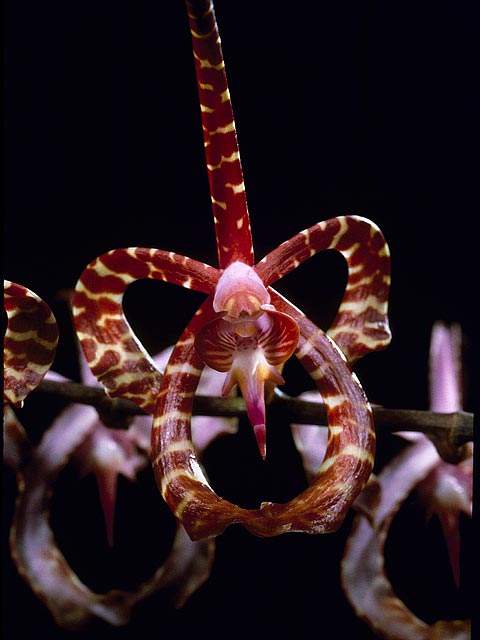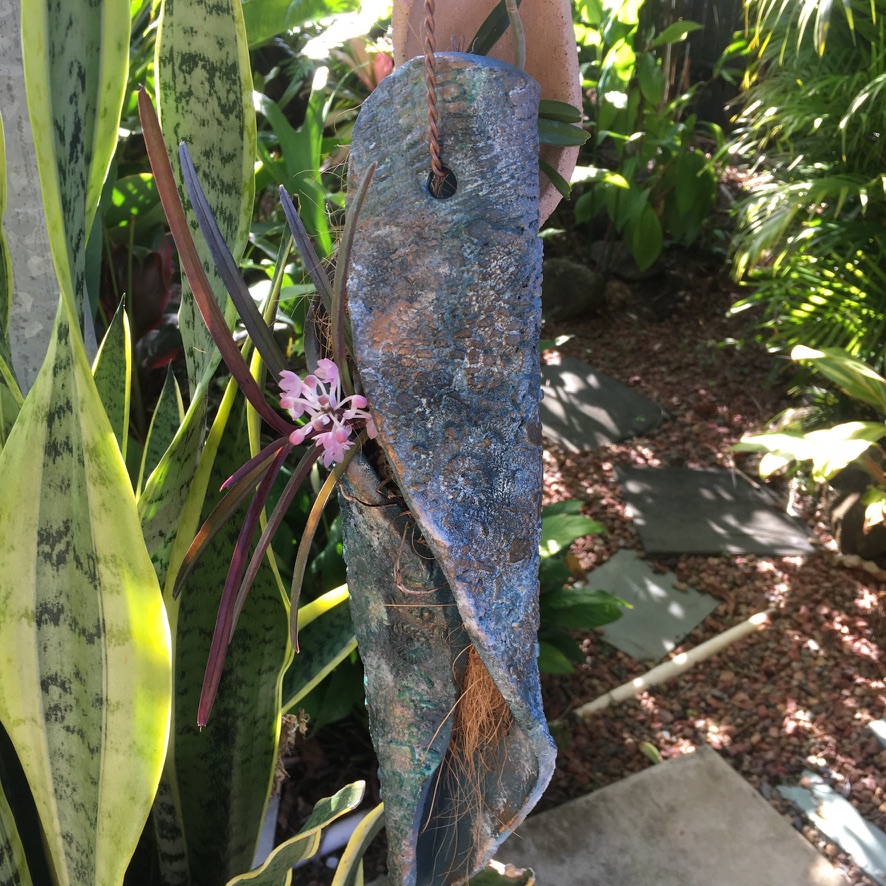The Vanda orchids by Susan Fairbairn and AI
Introduction
Vanda orchids and their relatives are among the most spectacular orchids grown in tropical and subtropical regions. This article focuses on the cultivation of these plants, with special attention to the Mokara intergeneric hybrids.

The Vanda Orchid Alliance
The Vanda Alliance comprises several closely related genera that share similar cultural requirements and growth habits. Notable members include but are not limited to:
- Vanda
- Ascocenda
- Aerides
- Rhynchostylis
- Mokara (an intergeneric hybrid or is it? A taxonomical question for another day)
Mokara Hybrids: A Closer Look at the Vanda alliance
Mokara is a remarkable intergeneric hybrid combining three genera:
- Vanda
- Ascocentrum
- Arachnis
The Parents of Mokara



Vanda garayi was previously an Ascocentrum and is a good example of how Mokara is more compact than the Vanda sp. It can also be indicative of flower form.
These hybrids are particularly valued for their:
- Compact growth habit
- Abundant flowering
- Wide colour range
- Better heat tolerance
- More frequent blooming cycles



Growth Habits and Size
Vanda
- Growth pattern: Monopodial (single stem)
- Size: Can reach 1-2 meters in height
- Root system: Extensive aerial roots
- Leaf span: 30-60 cm
Mokara
- Growth pattern: More compact than pure Vandas.
- Size: Typically 0.5-1 metre.
- Root system: Medium-length aerial roots.
- Leaf span: 20-40 cm.
Cultural Requirements
Light
- Bright, filtered sunlight (2000-4000 foot-candles)
- Morning sun preferred
- 50-70% shade cloth recommended
- Red-green leaves indicate optimal light
Temperature
- Day: 28-32°C (82-90°F)
- Night: 20-24°C (68-75°F)
- Minimum: 18°C (65°F)
Humidity
- Optimal range: 60-80%
- Higher humidity enables better growth
- Air movement essential
Watering
- Daily watering in growing season
- Reduce slightly in winter
- Water early morning
- Thorough drenching required
Growing Media and Mounting
- Bare Root Culture
Specialised Ceramic Mounting: ‘Orchid Hug’- Innovative stoneware mount designed specifically for Vandaceous orchids by the LittleFlower.Business;
- Curved, semi-cylindrical shape that cradles the plant while allowing roots to grow freely;
- Features:
- Textured surface with embossed Australian native flora designs.
- Finished with magnesium wash for a natural, earthy appearance.
- Can be customised with different designs or acrylic paint finishes.
- Allows roots to both suspend freely and adhere to the ceramic surface.
- Benefits:
- Provides stable support while maintaining air circulation.
- Ceramic material offers some moisture retention.
- Aesthetically pleasing integration of art and functionality.
- Suitable for both indoor and outdoor growing.

2. Basket Culture
- Large chunks of charcoal or clay pellets
- Provides stability
- Better water retention
Fertilisation
- Weekly feeding during growing season
- Balanced fertilizer (20-20-20)
- Reduce to biweekly in winter
- Flush monthly to prevent salt buildup
Common Growing Challenges
Leaf Problems
- Sunburn: White or brown patches
- Dehydration: Accordion-pleated leaves
- Nutrient deficiency: Yellowing
Root Issues
- Root rot from poor air circulation
- Dehydrated roots from insufficient watering
- Salt damage from over-fertilising
Tips for Success
1. Ensure strong air movement
2. Monitor root health regularly
3. Maintain consistent moisture
4. Adjust light levels based on leaf color
5. Keep humidity high
Seasonal Care
Growing Season (Spring-Summer)
- Maximum water and fertilizer
- Higher light levels
- Peak growth monitoring
Maintenance Season (Fall-Winter)
- – Reduced watering
- – Lower fertilization
- – Maintain temperature
Conclusion
Successful cultivation of Vanda alliance orchids in tropical climates requires attention to their basic needs: bright light, high humidity, good air movement, and regular water and fertiliser. With proper care, these orchids can provide years of spectacular blooms and become impressive specimen plants.
For more information on the growing of orchids see my growing series here Also see the American Orchid Society who provided the images for this article.




